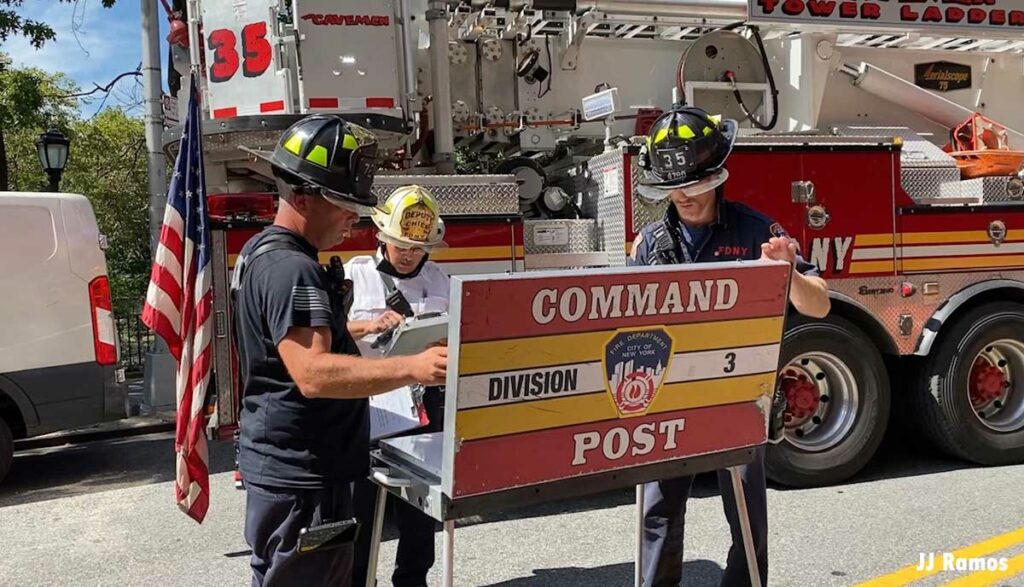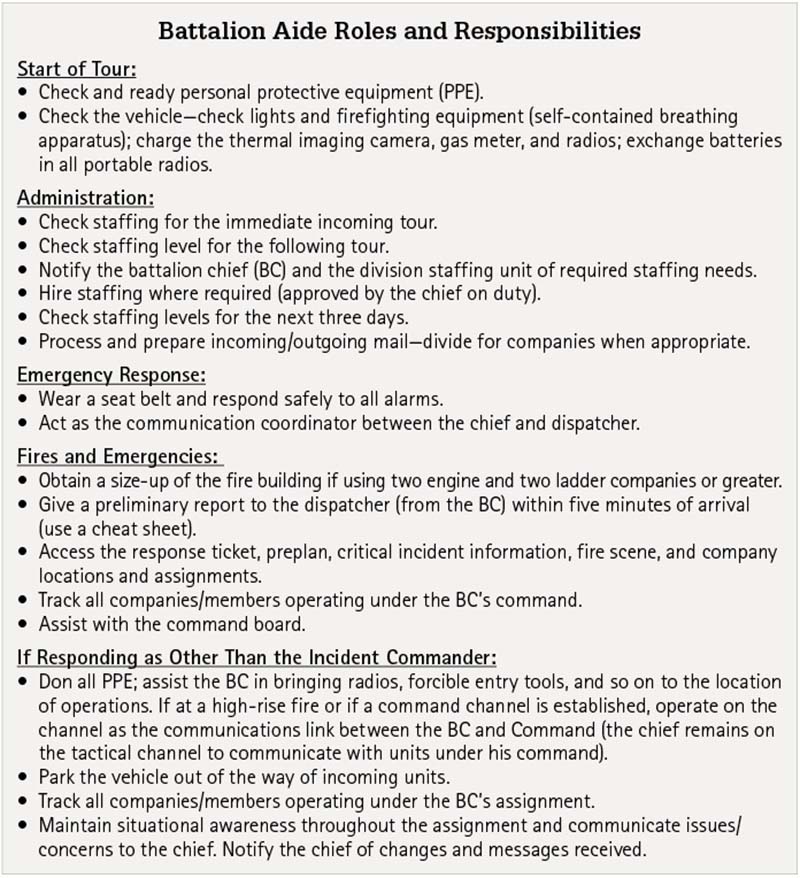
For many career fire departments in the United States, chief officers having a driver may be considered a luxury. However, in this article, we’ll discuss the value, roles, and responsibilities of such a position and the vital advantages that it can offer.
The Vital Importance of a Chief’s Driver
What’s in a Name?
Regardless of the position’s title—aide, chauffeur, technician, staff assistant, captain, sergeant, safety officer, F.I.T. (fireground incident technician), buggy boy, clipboard-carrying ballerina, and so on—from a safety and an operational perspective, the position of the chief’s driver is an important function. At emergency scenes (and while responding to them), a chief’s driver acts as an additional set of eyes and ears for the chief, which allows the chief to perform tasks such as conducting size-up, preparing an incident action plan, directing incoming units, formulating strategies and initial tactics, and communicating with both the dispatcher and units under his command.
During nonemergency functions, the driver may assist in (or be delegated to) preparing and staffing units, monitoring department communications, scheduling training/recertifications, preparing payroll, checking equipment, and even cooking lunch. You get the idea: There’s a lot more to this position than first meets the eye. In addition, if the driver position is staffed with a trained officer, he may be able to take on additional roles such as operations sector, initial safety officer, water resource officer, and the like.
Response Conundrum
A tip of the hat to the multitude of chiefs out there (both career and volunteer) who perform all these functions alone with the added responsibility of safely responding with lights and sirens, mapping out a response route, following GPS, talking on the radio, and perhaps gathering critical dispatch and preplan information—a fine example of multitasking to the max!
Many departments have given up or “lost” the chief’s driver position, only to suffer a serious response accident while a chief was attempting to drive, monitor several radio frequencies, call for additional resources, and other critical tasks as noted above. In several of those cases, the resulting insurance claims, line-of-duty deaths, and lawsuits have led to the reinstatement of such a position.
Emergency Duties
Once on scene, the chief’s driver can become a communication link between the incident commander (IC—the chief) and the dispatcher. Additionally, the driver may be able to help direct or complete such functions as a 360° size-up, apparatus placement, hydrant locations, gathering information on occupants/exposures, and establishing/implementing crew accountability. During Mayday or urgent radio traffic, the driver may be able to assist the IC in identifying a distressed member or gather valuable information for the IC regarding the emergency traffic.
The box below lists some roles and responsibility considerations for the chief’s driver. Of course, your department may tailor this list and use it as a training tool to develop a chief’s driver training program or, perhaps, develop a fiscal plan to staff such a position.

Command and Control
With the multitude of responsibilities that come with a chief’s position, it is during emergency response and incidents where a chief’s driver position can prove to be invaluable. It can help a fire department meet certain sections of National Fire Protection Association (NFPA) 1500, Standard on Fire Department Occupational Safety, Health, and Wellness Program, and NFPA 1710, Standard for the Organization and Deployment of Fire Suppression Operations, Emergency Medical Operations, and Special Operations to the Public by Career Fire Departments, in terms of safety officer, crew integrity (two in/two out), accountability, technical expertise, and so on. In addition, the chief’s driver, if trained and used to the maximum benefit, may far outweigh the cost of that position. It may also serve as a promotional opportunity or technician level pay step.
In some instances (such as severe weather, civil unrest, protests, and planned special events) where workloads are anticipated to increase or because of personnel safety concerns, some departments and municipalities do provide drivers for limited periods of time. That practice should be an example of the need to staff such a position.
Heads or Tails?
The other side of this discussion involves the ever-present staffing, finance, and budget concerns. If developing or implementing a chief’s driver position would take a firefighting position off a fire truck—especially in understaffed or minimally staffed departments—I would bet that most chief officers would prefer to do without it and they’d be willing to assume the functions that would otherwise be delegated to that position (as so many already do). However, if adding the position or organizing and elevating the already existing chief driver’s position to one that can be used and maximized during fires and emergencies, it may be beneficial to look at the position as so much more than just a “buggy driver.”
Stephen Marsar, EFO, is a 35-year veteran of the emergency services and a battalion chief in the Fire Department of New York. A former chief and commissioner of the Bellmore (NY) Volunteer Fire Department, Marsar has a master’s degree in homeland defense and security from the Naval Postgraduate School, has a bachelor’s degree in fire science and emergency services administration from SUNY Empire State College, and is a two-time winner of FEMA’s National Outstanding Research Award. He is on the Advisory Boards of Fire Engineering and FDIC International.

